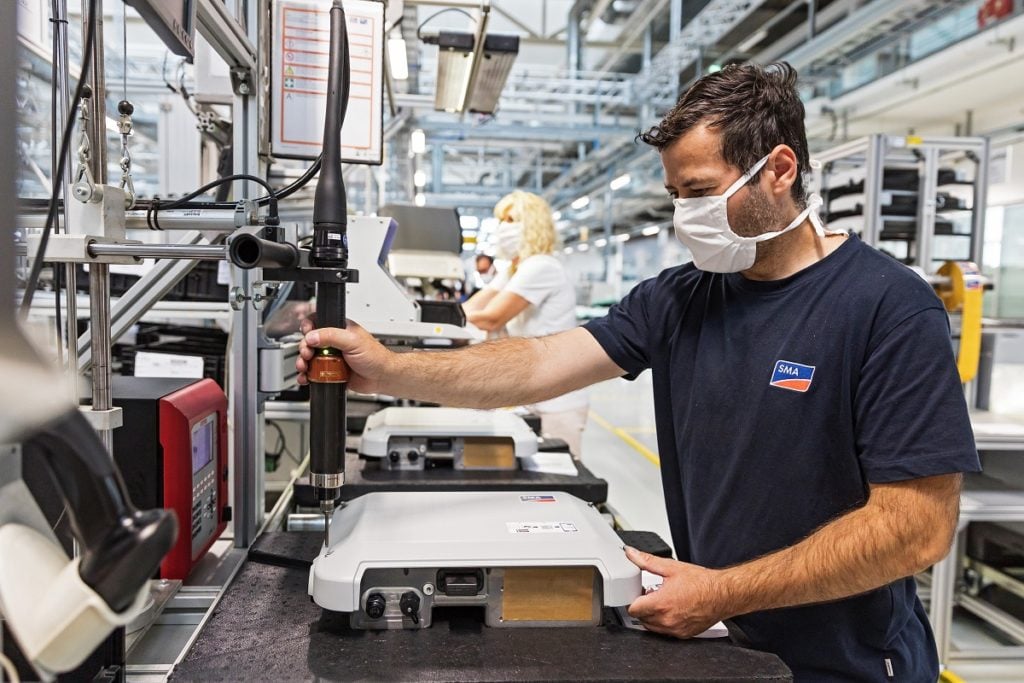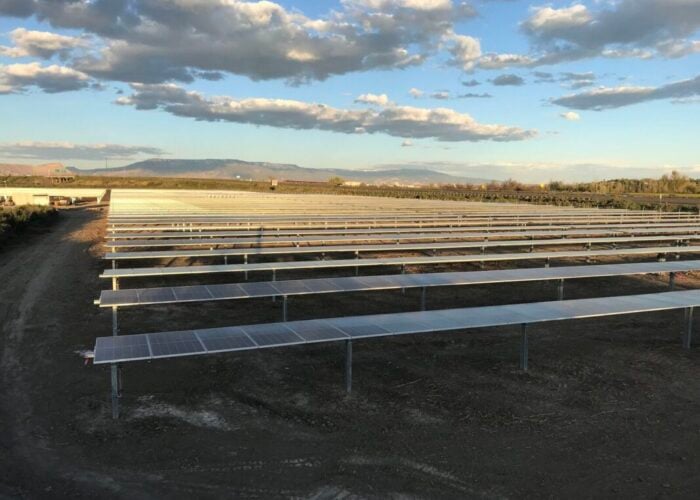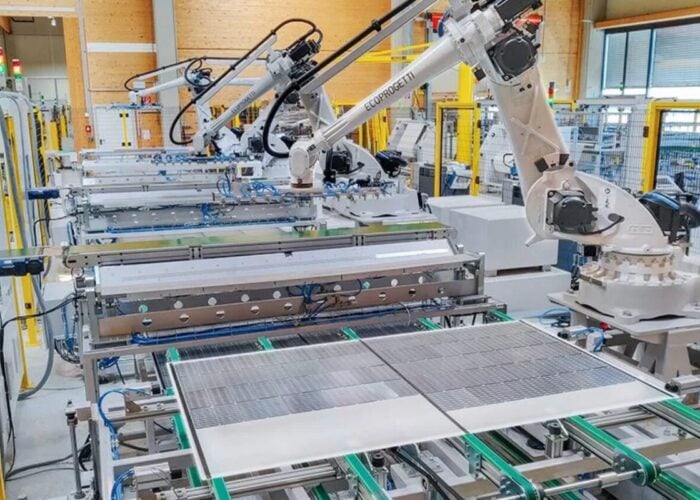
The inverter market is experiencing “growing pains” as falling prices, shifting demand and technological product changes cause problems for the sector’s major Western manufacturers.
In recent weeks, three major western inverter manufacturers – SMA Solar, Enphase and SolarEdge – have reported challenging financial results and job cuts. Last week, German producer SMA Solar said it would cut 1,100 jobs by the end of 2025 as part of its “restructuring” efforts and the week before, US-based Enphase announced 500 job losses and the abandonment of its manufacturing contract for a facility in Mexico.
Try Premium for just $1
- Full premium access for the first month at only $1
- Converts to an annual rate after 30 days unless cancelled
- Cancel anytime during the trial period
Premium Benefits
- Expert industry analysis and interviews
- Digital access to PV Tech Power journal
- Exclusive event discounts
Or get the full Premium subscription right away
Or continue reading this article for free
Back in August, Israel-headquartered SolarEdge announced the departure of its CEO, Zvi Lando, amid efforts to “recover” from consecutively falling quarterly revenues and shipments.
‘Growing pains‘
These negative showings from inverter producers, most striking in some ways with SMA as a former market leader, speak to “growing pains” in the industry, according to Cormac Gilligan, associate director of clean energy technology at S&P Global.
“The global inverter market has scaled up a lot in the last two years,” Gilligan tells PV Tech Premium. “One of the primary drivers of this was Europe…heavily driven by the energy crisis linked to [the outbreak of war in] Ukraine.”
Renewable energy generation capacity, particularly distributed assets like residential and corporate & industrial (C&I) solar PV, saw a boom in response to the European energy crisis. Skyrocketing gas and electricity prices and the sudden insecurity of reliance on Russian gas supply drove European governments to seek energy security through renewable energy generation and European citizens and businesses sought greater independence from the volatile energy market.
This caused an influx of supply into Europe, Gilligan says, and was a boon for the likes of SMA and SolarEdge. But as with Europe’s module supply, which expanded dramatically and quickly reached oversupply, the boom period would not last.
“Fast forward to 2024, we’ve had higher interest rates, lower electricity bills…and we’ve really started to see the numbers fall in terms of shipments into Europe,” Gilligan says. Lower bills and higher interest rates have reduced demand for residential solar, and shipments have followed suit.
He also outlines how the distribution channels in Europe began to over-order and order speculatively in 2022 as demand expanded rapidly. When that demand dropped, “it certainly had an impact distributed generation (DG) and the inverter suppliers in that segment. You can see this reflected in some of the Western suppliers,” like SMA Solar.
Gilligan told PV Tech Premium that PV inverter revenue is predicted to fall 20% in 2024, with the global average price forecast to fall 17% in 2024 owing to product and regional mix changes. Simultaneously, PV inverter shipments are forecast to decrease by just 4% in 2024.
‘An adolescent market’
Following the supply shortage at the start of 2022 and the subsequent oversupply in 2022-23, Gilligan says that the inverter market – and the wider solar market – is entering its adolescence. A number of broad factors have ushered in this change of era.
Staying in Europe, some key pillars of the residential market have been removed: Netherlands’ net metering scheme and Italy’s Superbonus. These were major incentives for the adoption of residential solar systems and their removal has implications for demand on a continental scale. Negative power prices in Spain have also seen changes to its utility-scale solar market, the second largest in Europe.
“Manufacturers are having to change strategy a little bit,” Gilligan says. More on this later.
Concurrently, he says that the inverter market has broadly become more commoditised: “Three to five years ago, there were some companies which had an edge in residential or C&I or utility-scale. There may still be an edge for some suppliers, but that gap has greatly narrowed and…it’s getting harder and harder to distinguish the products.”
This also contributed to a drop in price. Chinese manufacturers solved this by scaling up, speeding up their technology cycles and operating on economies of scale where lower prices can be sustained more easily. But most Western manufacturers (SMA, SolarEdge, Enphase et al) have little presence in China, Gilligan says, and their major markets are “transitioning”, like the Netherlands and Italy, which “took the heat out of them”.
More broadly still, renewable energy and climate concerns are competing for finance and attention far more than they were in 2022, with ongoing inflation and cost of living, wars and political uncertainties.
‘A new level of sophistication’
Recent changes to support for residential solar installations have generally led to greater reliance on residential energy storage systems and self-consumption (most notably in California).
There has also been a significant increase in the integration of electric vehicles, energy storage and solar systems and the broader electrification of much of society. In short, solar PV’s relationship with established electricity grids is changing.
As the solar and inverter markets move in tandem beyond their adolescence, inverter products will have to become more complex.
“The market is going to have to move more towards self-consumption, solar and storage. If you are active in the market, you’re going to have to be able to participate with dynamic tariffs,” Gilligan says.
“And there’s going to be a whole new level of sophistication that’s going to require, and the inverter is at the heart of this because it’s the brains of the operation.”
He says that inverter companies like SMA and others have “Maxed out what they can do, by and large, with the hardware…over the last two to three years. |They can work with energy storage, EV charging, heat pumps – they’ve more or less cracked that code.”
The next phase, according to Gilligan, is to interact with the grid in a “very dynamic, clever way…so you don’t get limited.
“At the moment, loads of the companies are moving from solar inverters to hybrid inverters so they can handle storage. It’s also obvious that they’ll have to have huge compatibility with EV charging and heat pumps. Then we even get into things like energy management systems software, either for self-consumption…or interacting with the grid.”
Gilligan says a lot of these lessons have been learned in the utility-scale segment, and indeed, SMA Solar’s most recent financial results gave a strong showing for its utility-scale segment even as its residential business floundered.
“In this macro climate where there’s some risk aversion…big funds can give money to utility-scale projects because they understand it,” Gilligan says. “[But] going to DG, especially residential, they’re highly sensitive to changes in cost of living, interest rates, loans…it’s just dropped down their priority list.”
In its Q3 financial results, Barbara Gregor, CFO at SMA Solar said “The solar industry is going through a transformation” and highlighted “changes in demand”. As that transformation progresses, Western inverter manufacturers will need to follow suit.






